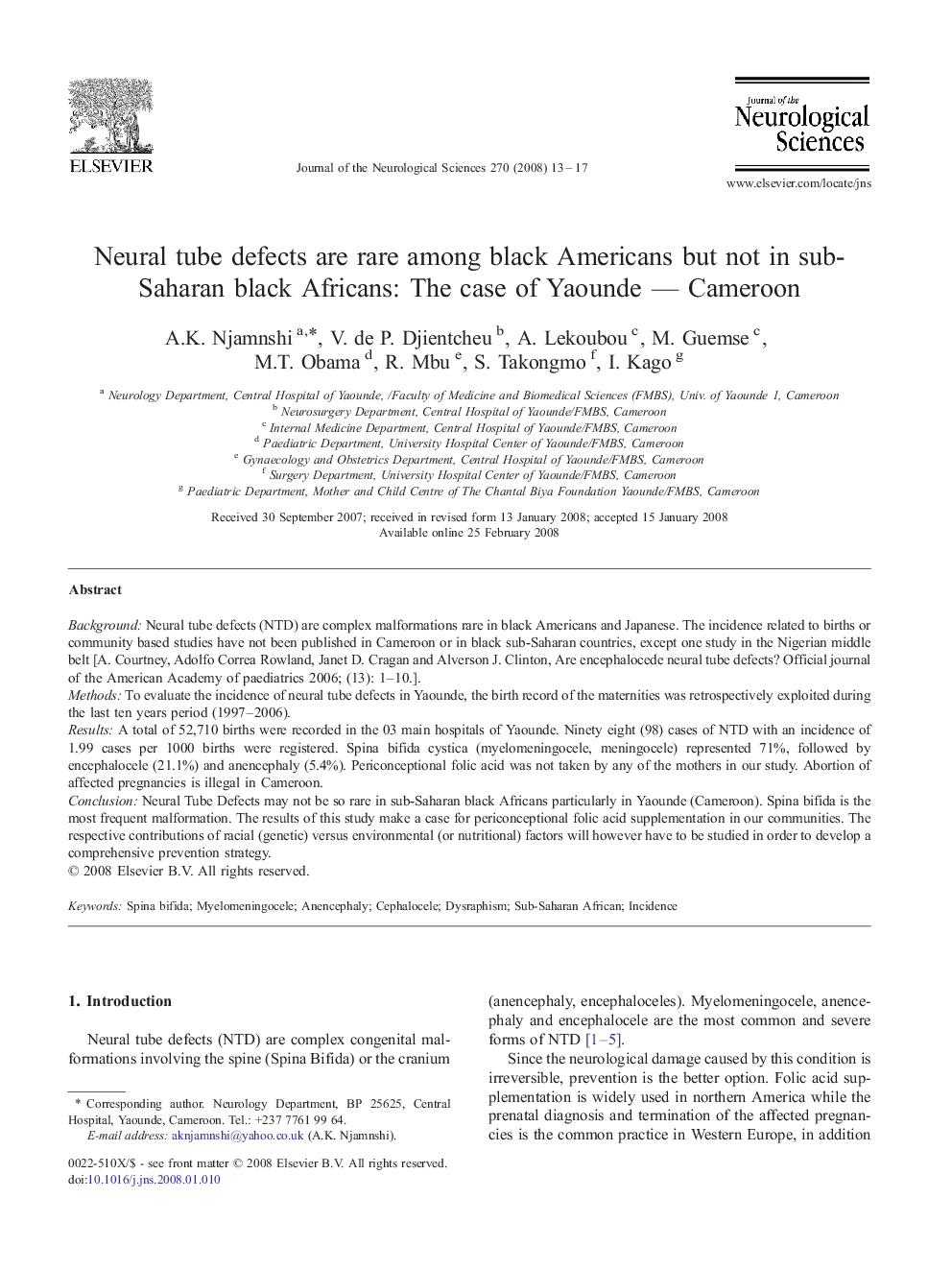| Article ID | Journal | Published Year | Pages | File Type |
|---|---|---|---|---|
| 1915646 | Journal of the Neurological Sciences | 2008 | 5 Pages |
BackgroundNeural tube defects (NTD) are complex malformations rare in black Americans and Japanese. The incidence related to births or community based studies have not been published in Cameroon or in black sub-Saharan countries, except one study in the Nigerian middle belt [A. Courtney, Adolfo Correa Rowland, Janet D. Cragan and Alverson J. Clinton, Are encephalocede neural tube defects? Official journal of the American Academy of paediatrics 2006; (13): 1–10.].MethodsTo evaluate the incidence of neural tube defects in Yaounde, the birth record of the maternities was retrospectively exploited during the last ten years period (1997–2006).ResultsA total of 52,710 births were recorded in the 03 main hospitals of Yaounde. Ninety eight (98) cases of NTD with an incidence of 1.99 cases per 1000 births were registered. Spina bifida cystica (myelomeningocele, meningocele) represented 71%, followed by encephalocele (21.1%) and anencephaly (5.4%). Periconceptional folic acid was not taken by any of the mothers in our study. Abortion of affected pregnancies is illegal in Cameroon.ConclusionNeural Tube Defects may not be so rare in sub-Saharan black Africans particularly in Yaounde (Cameroon). Spina bifida is the most frequent malformation. The results of this study make a case for periconceptional folic acid supplementation in our communities. The respective contributions of racial (genetic) versus environmental (or nutritional) factors will however have to be studied in order to develop a comprehensive prevention strategy.
